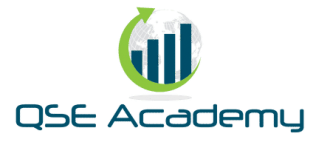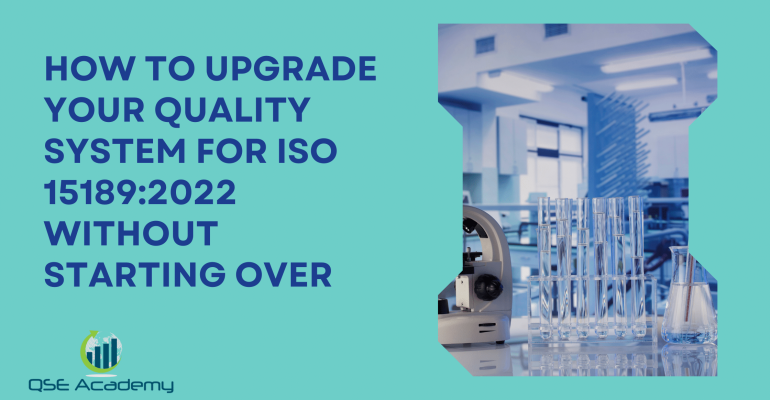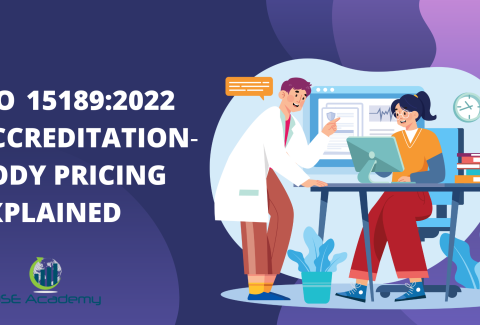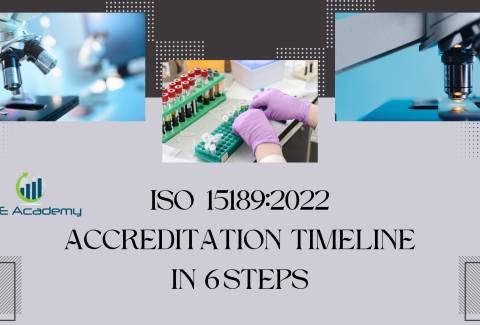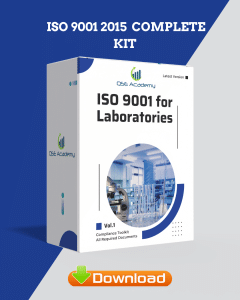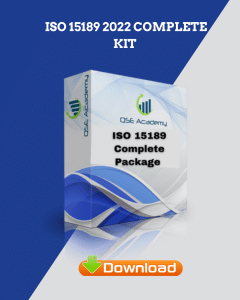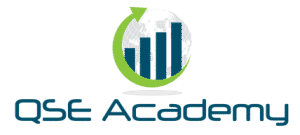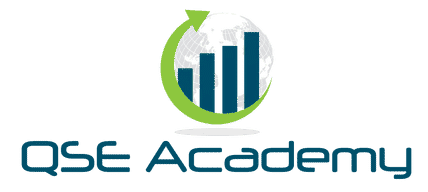How to Upgrade Your Quality System for ISO 15189:2022
Last Updated on October 22, 2025 by Hafsa J.
How to Upgrade Your Quality System for ISO 15189:2022 Without Starting Over
Let’s be real—when a new version of a standard drops, panic tends to follow. I’ve heard it more times than I can count:
“Are we going to have to rewrite everything?”
Short answer? No, you don’t.
In my experience helping dozens of labs through ISO 15189 transitions, most of your current QMS can stay exactly where it is—with a few smart upgrades. The labs that get this right aren’t the ones who start from scratch. They’re the ones who know what to keep, what to tweak, and what actually needs a full rewrite.
Here’s what this guide is really about: helping you upgrade your QMS without overcomplicating the process or burning out your team. I’ll walk you through what’s changed, how to identify what still works, and how to make the right updates—quickly and confidently.
If you’re feeling overwhelmed or unsure where to begin, you’re not alone. But you’re also not behind. You’re right on time—and this article will show you exactly how to move forward without starting over.
Let’s dive in.
What’s New in ISO 15189:2022
Here’s what I’ve noticed—when labs hear there’s a new version of ISO 15189, the first instinct is to assume everything needs to be overhauled. But that’s not how this works.
ISO 15189:2022 builds on the foundation you already have. It’s an update, not a teardown. Yes, there are important changes—but a lot of your existing system can stay intact if it’s already doing its job.
Let’s break it down.
What’s Actually New:
-
Risk-based thinking is now everywhere. Instead of just reacting to problems, you need to show you’re anticipating them—and building that into your processes.
-
Point-of-Care Testing (POCT) is officially in scope. If your lab is involved in POCT—even indirectly—you’ll need documented control over it.
-
Data integrity and IT system validation are no longer optional. Think audit trails, LIS security, and access control.
-
Top management accountability is clearer. It’s not just about policies—it’s about how leadership supports quality every day.
But here’s the good news:
What You Can Keep:
-
Document control, internal audits, nonconformity handling—these still work the same in principle.
-
Your corrective and preventive action system? Likely still solid, just make sure it integrates risk.
-
Many technical procedures remain compliant with minor tweaks—if they’re already aligned with best practices.
One of the labs I worked with recently expected to replace half their documentation. After doing a structured clause comparison, we found that nearly 75% of their QMS was still relevant. We only had to update the structure and layer in a few new risk and POCT elements.
This is important because the last thing you want is to waste time rewriting procedures that already meet the intent of the new standard. Upgrading isn’t about overhauling—it’s about being strategic.
Now that we’ve clarified what’s changing (and what’s not), let’s move into how to perform a smart gap analysis without overcomplicating it. That’s where real clarity starts. Ready? Let’s go.
How to Perform a Gap Analysis
Let’s be honest—“gap analysis” sounds more complicated than it needs to be. I’ve had lab teams freeze up at the very mention of it. But in practice? It’s just a structured way to figure out what you already have, what’s missing, and what needs a tweak.
Here’s how I explain it to clients: It’s like checking your ingredients before making a new recipe. You don’t throw out your pantry—you check what you already have and make a smart shopping list for the rest.
Step 1: Use a Clause-by-Clause Comparison
Grab the 2022 standard and compare it directly with your current QMS. Go clause by clause. You don’t need fancy software—just a spreadsheet with columns like:
-
Current system status (Fully covered, Partially covered, Not covered)
-
Gaps or risks
-
Action needed
-
Owner
-
Deadline
If you’re not sure how to start, ISO’s table of contents is your best friend. I always recommend highlighting changes in yellow, new content in red, and keepers in green. Visual cues keep it manageable.
Step 2: Focus First on the Big Shifts
If you try to assess every minor clause at once, you’ll drown in details. Start with the areas that changed the most:
-
Risk management
-
POCT oversight
-
Data integrity and information systems
-
Leadership responsibilities and competence frameworks
These are where the bulk of your updates will likely happen.
Step 3: Involve Your Team Early
Don’t do this in a vacuum. Bring in the people who actually use the system—techs, QA leads, even IT. Their feedback will help you avoid over-documenting or missing something crucial.
I worked with a regional lab group that knocked out their initial gap analysis in two weeks—just by dividing the standard among department leads and regrouping weekly. No consultants, no expensive software. Just clear structure and ownership.
This is key: A good gap analysis doesn’t give you all the answers—it tells you exactly where to focus. And that’s half the battle when you’re trying to upgrade without starting from scratch.
Now that we’ve identified the gaps, let’s talk about how to tackle the upgrades—strategically, not all at once. That’s up next.
Focus on High-Impact Areas First
Now that you’ve mapped out what’s missing, here’s the key: don’t try to fix everything at once. That’s the fastest way to burn out your team and stall progress.
Instead, focus on high-impact areas—the ones that ISO 15189:2022 has clearly expanded or shifted. These are the updates that auditors are going to care most about. And frankly, they’re also the ones that protect your lab’s reputation the most.
Start Here:
1. Risk Management Integration
This is one of the biggest shifts. ISO wants you to go beyond reactive fixes and actually embed risk thinking into how you plan, operate, and improve.
If you’re not already doing this, start by adding a basic risk assessment step to key processes like sample handling, testing, or reporting.
2. Point-of-Care Testing (POCT)
If POCT happens under your roof—or under your lab’s responsibility—you need procedures, training, equipment validation, and documentation to prove it’s under control.
One of my clients added POCT to their scope for the first time and had to quickly document oversight for glucose and INR testing in their emergency unit. We didn’t reinvent the wheel—we mirrored their central lab protocols with a few simple modifications.
3. Information Management & Data Integrity
Now’s the time to review your LIS, audit trails, access controls, and electronic recordkeeping. If you’re still relying on paper backups or shared logins, those days are numbered.
4. Leadership & Competency Frameworks
This version of the standard holds top management responsible for promoting quality—not just signing the quality policy. Also, staff competence needs to be demonstrated through ongoing, role-specific evaluations—not just an annual sign-off.
What Not to Prioritize (Yet):
-
Don’t obsess over minor clause numbering or formatting.
-
Don’t rewrite stable SOPs just because the clause header changed.
-
Don’t rush to rebrand your entire QMS until you’ve tackled the areas that actually impact compliance.
Here’s what I’ve learned: Strategic upgrades protect your energy and your outcomes. You’ll avoid creating extra work and stay focused on what really matters under the new version of the standard.
Coming up next—we’ll talk about why training comes before rewriting. Because if your team isn’t on board, none of these upgrades will stick. Let’s dive into that.
Why Staff Alignment Comes First
Here’s something I’ve seen way too often: a lab rewrites its procedures, updates the manual, even builds new forms—but forgets to train the people who are actually supposed to use them.
Then what happens? The audit rolls around, and staff give the old answers, follow the old processes, or just stare blankly when asked about risk or POCT documentation.
Let’s avoid that.
Before you touch a single SOP, get your people aligned. Here’s how.
Start with Awareness
You don’t need a massive training session. What you need is clear communication about:
-
What’s changed in ISO 15189:2022
-
Why it matters to them
-
What role they’ll play in the transition
I’ve done this with 20-minute team huddles, department-specific walk-throughs, and short recorded videos. Keep it simple and relevant to their day-to-day work.
Focus on Real Examples
Instead of quoting the standard, walk them through scenarios. For example:
-
“If you’re collecting blood samples at the bedside, here’s how POCT applies now.”
-
“When you log into the LIS, this is why individual access matters for data integrity.”
People remember what’s connected to real tasks—not what’s in a policy binder.
Don’t Wait Until the End
A common mistake? Updating everything behind the scenes and then springing changes on staff two weeks before an audit. That’s a recipe for confusion and resistance.
One lab I worked with trained each department before rewriting their procedures. They got better suggestions, avoided irrelevant edits, and cut their transition time by almost half.
This is important because your QMS is only as strong as the people using it. If your team understands the “why,” they’ll support the “how”—and that makes everything smoother, from implementation to audit day.
Now that your team’s aligned, let’s talk about one of the most overlooked strengths in a transition: what you can reuse without reinventing the wheel. That’s next.
Reuse & Adapt Proven Procedures
Let’s get one thing straight—you don’t have to rebuild your entire quality system from the ground up. In fact, doing that usually causes more problems than it solves.
In my experience, some of the best-run labs already have strong procedures that align perfectly with ISO 15189:2022—they just don’t realize it because the clause numbers changed or the format looks different.
So before you start rewriting, ask yourself:
Is this procedure actually broken? Or does it just need a light update?
Here’s What You Can Usually Reuse:
-
Document control processes – Still essential, still valid.
-
Internal audit checklists – Just add a few items based on the new clauses.
-
Corrective action forms – Likely still usable; just ensure root cause analysis considers risk now.
-
Competency assessments – If they’re role-specific and up to date, you’re ahead of the game.
One lab I worked with was ready to toss their entire document control procedure because “it wasn’t labeled for ISO 15189:2022.” After reviewing it, we realized all it needed was a two-sentence addition about digital signatures and system access. That saved them hours—and avoided confusing the staff who were already using it well.
When You Should Adapt (Not Rewrite):
-
If terminology has changed, update the language but keep the structure.
-
If the process is sound but doesn’t reference risk, add a brief risk consideration step.
-
If you’re adding POCT, mirror existing test management procedures and tailor as needed.
Think of it like renovating a house. You don’t demolish the entire thing just because the kitchen needs new cabinets. You upgrade where it counts—and keep the solid foundation intact.
This is how you upgrade your QMS without creating unnecessary work (and without overwhelming your team).
Now that we’ve covered what you can keep, it’s time to talk about the most common traps labs fall into—and how to avoid them. Let’s go there next.
Frequently Asked Questions
Q1: Do we need to replace our old SOPs with brand new ones?
No. In most cases, you can keep your existing SOPs if they still meet the intent of the 2022 standard. Just add or revise where needed—especially around risk, data handling, and POCT.
Q2: How long does a typical upgrade take if we don’t start over?
For most labs I’ve worked with, a focused transition takes three to six months—sometimes less if your system was already in good shape under ISO 15189:2012.
Q3: Can we transition without using a consultant?
Absolutely—if you’ve got the internal expertise and enough time. That said, bringing in an experienced guide can speed things up and help you avoid common pitfalls, especially when you’re short on resources.
Upgrade Smart, Not from Scratch
Here’s the bottom line—you don’t need to start over to align with ISO 15189:2022. Most of what your lab already has in place can absolutely be reused, adapted, and strengthened. You just need a smart, structured plan—and the clarity to know where to focus.
Whether it’s ISO 9001, ISO 22000, or the cosmetics-focused ISO 22716, I’ve spent my career I’m not here to call myself an expert—I prefer “enthusiast” because I truly love what I do. When I’m not writing about standards, you’ll probably find me playing Piano 🎹, connecting with people, or diving into my next big project💫. I’m an engineer specialized in the food and agricultural industry
make ISO standards less intimidating and more approachable for everyone.
turning complex jargon into clear, actionable steps that businesses can actually use.
There’s something incredibly rewarding about helping people navigate food safety and quality management systems
in a way that feels simple, practical, and even enjoyable.
I have a Master’s in QHSE management and over 12 years of experience as a Quality Manager
I’ve helped more than 15 companies implement ISO 9001, ISO 22000, ISO 22716, GMP, and other standards
My clients include food producers, cosmetics manufacturers, laboratories, and service companies
I believe quality systems should be simple, useful, and efficient.
